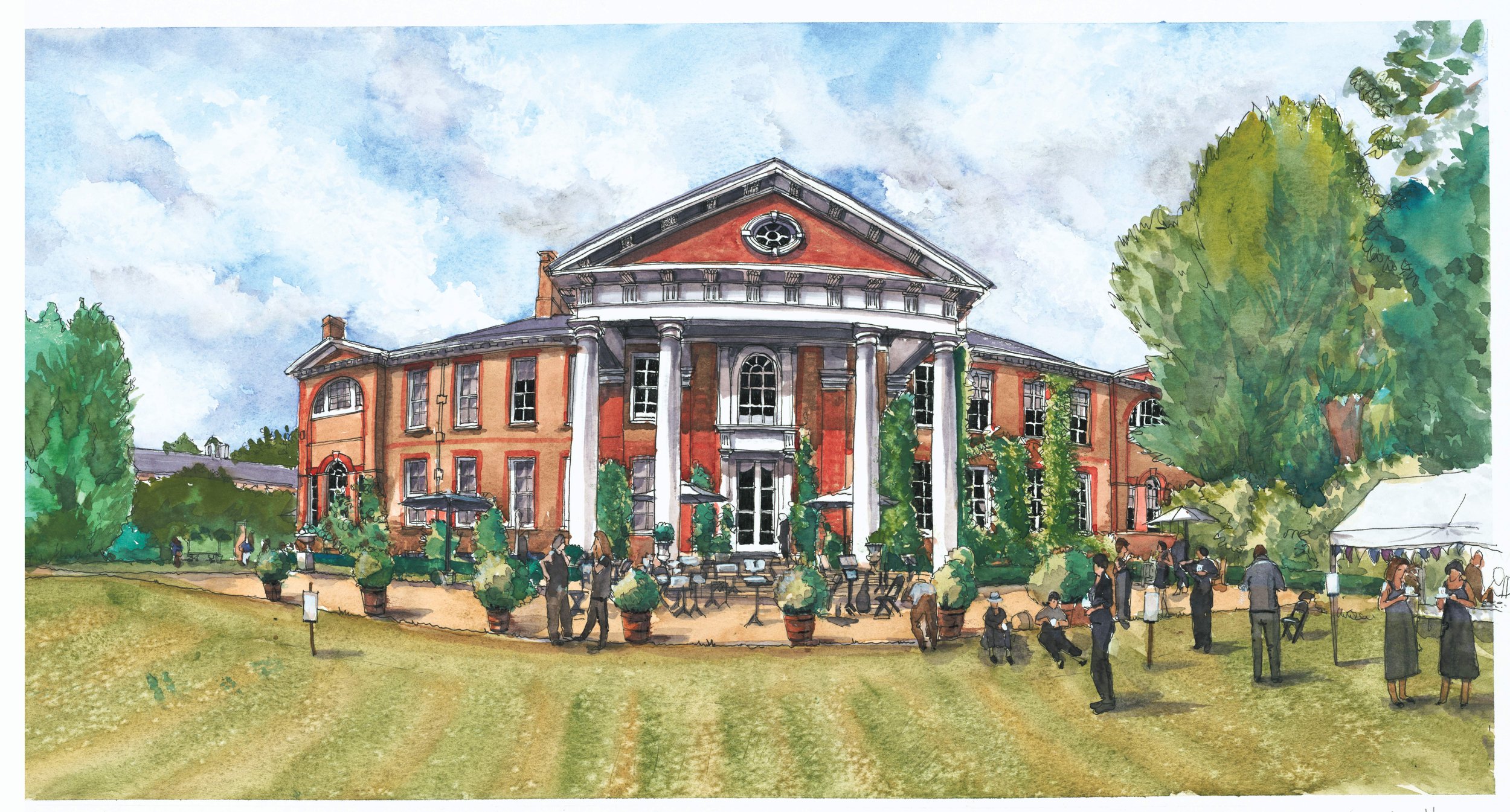
Trumpeters House
Trumpeters House
Every year in July, the Museum of Richmond holds a summer fete at Trumpeters House. If the sun is shining, this is a glorious party. The Barnes Orchestra plays, and tea and cakes are served in the marquee—an idyllic English Garden Party. Unfortunately, the beautiful garden is only visible as the wall along Cholmondley Walk.
Trumpeters House is built on the site of the Tudor Palace Middlegate. Its entrance was once adorned by two stone sculptures of Trumpeting Boys, originally from the Palace (a replica in the Richmond Museum).
The gardens are both extensive and beautiful. They were replanted with plants from Elizabethan times by the current occupant. The wall that divides Trumpeters House from Asgill House was once the outer wall of the Palace. At the bottom of the garden is the studio of romantic expressionist painter Ewa Gargulinska. Her poetic paintings sit between imagination and reality, slightly disturbing but absolutely magnetic.
Built in 1703 for diplomat Richard Hill, who was initially a tutor to the Burlington family, he made his fortune as Deputy to Richard Jones, Earl of Ranelagh, and paymaster general to the army in Flanders. He became Provost of Eton and a member of the Royal Society. The house was probably designed and built by John Yoemans, a master bricklayer from Hampton.
Hill left his house to his nephew, Samuel Barbour, who sold it to Lewis Way in 1730. Around 1815, Prince Metternich, former Chancellor of Austria, occupied the house.
During World War II, the American Red Cross Day Club occupied it, but the house suffered bomb damage in 1944, and they had to move out.